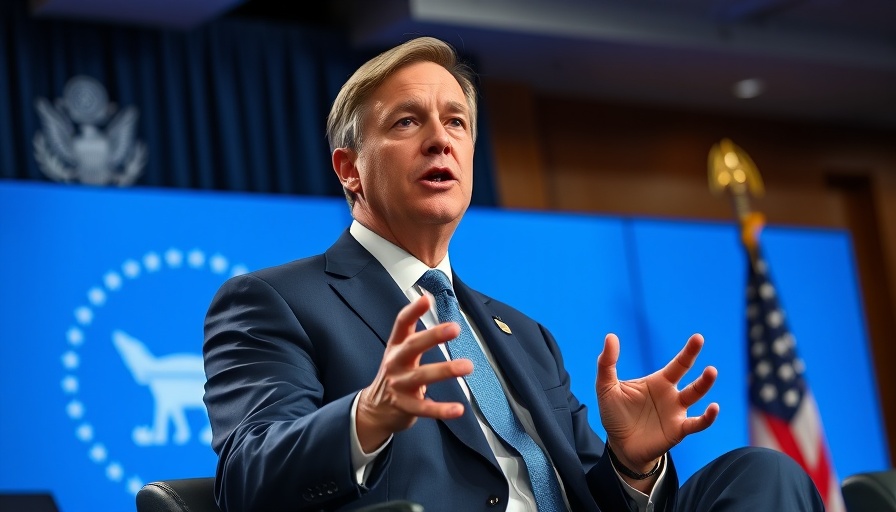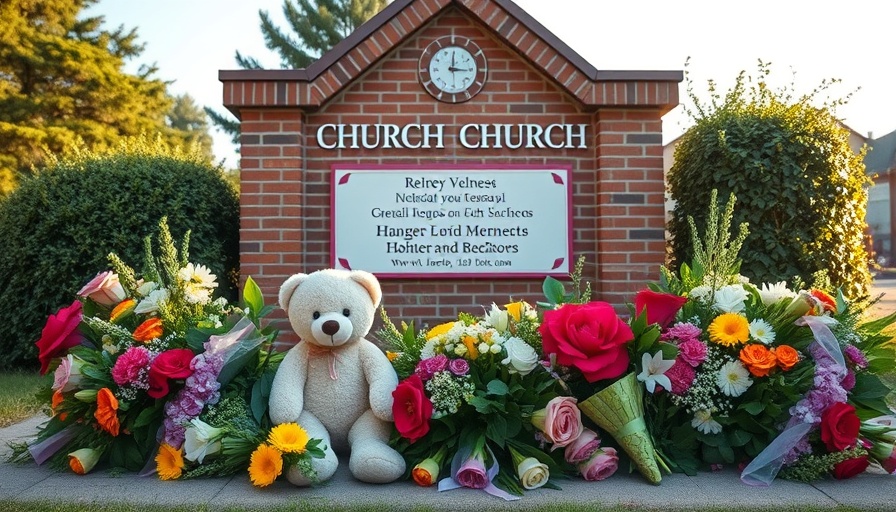
Ken Martin's Leadership: A Bold Face for a Fractured Party
As Ken Martin takes the helm of the Democratic National Committee (DNC), he is stepping into the leadership of a deeply divided party grappling with frustration and disillusionment in the wake of a tumultuous political landscape. The frustration expressed by Democratic voters is palpable, particularly after recent setbacks that saw the party lose ground in critical elections. Martin's ascent to DNC chair, surprising many within the establishment, signals a potential shift in strategy as the party seeks to redefine its identity amidst rising tensions and external pressures.
Navigating a Fractured Landscape: Understanding the Stakes
Martin embodies a new approach that seeks to unify a party at odds with itself. With strong critiques aimed at the party's traditional leaders and their strategies, he acknowledges the urgent need for a cohesive plan to mobilize voters disenchanted by Donald Trump’s presidency. "We got punched in the mouth in November’s election," Martin has stated, underscoring the need for clarity in the party's message and outreach. Without a unified front, Democrats risk further alienating working-class voters who feel neglected by the party’s recent focus on identity politics rather than pragmatic economic issues.
Democratic Disenchantment: Understanding Voter Frustration
Current polls reveal that many Democratic voters feel disconnected and rudderless, particularly as Trump shifts narratives and maintains substantial approval ratings. The Democrats’ focus on warning against Trump failed to resonate, instead highlighting the urgency for a more resonant economic strategy. To regain trust, Martin and his supporters must embrace a message of accountability, emphasizing what policies will directly impact the lives of everyday voters.
Challenges Ahead: The Political Landscape
Considered a tactical leader, Martin is set to navigate an uphill battle against a unified Republican front that has successfully leveraged populist sentiments. The growing disconnect with rural voters poses additional challenges that Martin acknowledges. To avoid further losses, he must communicate the value of Democratic policies in relatable terms—making the case for why Democrats should be entrusted again with their votes.
The Role of Messaging in Party Unity
As the minority party in Congress, Democrats now face a crucial challenge: developing a cogent narrative that can resonate across geographical and ideological divides. The responses from party leaders reflect a determination to bring back disenfranchised voters while also expanding outreach to marginalized communities. The messaging effort spearheaded by senators like Cory Booker and Tina Smith aims to clarify how the economic ramifications of Trump’s policies detrimentally affect a broader demographic of Americans.
Understanding the 'Minnesota Nice' Dilemma
Ken Martin’s leadership style, often described as a blend of cordiality and calculated ruthlessness, may be precisely what the DNC needs. One faction of the party acknowledges his capability to “cut through the noise” of outdated approaches while another expresses apprehension about potential fractures within party loyalty. As he navigates the intricacies of party dynamics, striking the right balance between firmness and approachability will be critical.
Rebuilding Trust: A Call to Action for Democrats
Martin’s victory as DNC chair came amidst heightened expectations and pressure from core party activists. His strategic vision aims to restore the Democratic Party’s previous stature, recognizing the pivotal role that trust plays in electoral success. The rebuilding of relationships with key demographics is essential for a sustainable future. As he begins this ambitious journey, it’s imperative to listen attentively to the voices of dissent and create an inclusive atmosphere where all party members feel heard.
Looking Forward: A Vision for Future Elections
With a clear understanding that the party needs to reposition itself moving forward, Martin commits to a pragmatic approach that promises action. He plans to release a detailed analysis of the 2024 election results to learn from the past and ensure future effectiveness. This commitment to transparency will help shape the Democratic narrative as they approach a pivotal election in 2028, where new standards for candidates will be set alongside the expectations of a broader electorate.
Conclusion: What Lies Ahead
As Ken Martin takes on the mantle of leadership, he faces both challenges and opportunities that could redefine the path of the Democratic Party. His ability to unite various factions while courting disenchanted voters will be crucial in the months ahead. The Democratic Party stands at a crossroads, and Martin’s leadership could very well determine its subsequent direction as they seek to reclaim their voice in national politics.
 Add Row
Add Row  Add
Add 




Write A Comment